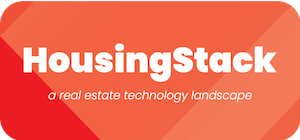HousingStack is a real estate technology landscape that provides a dynamic visual of rapid changes in the sector. The HousingStack is exclusively for HW+ members. To join the HW+ community, go here.
As we’ve shown in HousingStack, there are a lot of companies focused on generating leads for real estate brokerages and agents. Apparently there are so many that some agents say they get more calls from lead sales people than from actual leads.

HW+ Columnists
Some agents have gone so far as to say that these leads aren’t of great quality and they’re not getting their money’s worth. I say it’s great if you actually know that and are measuring because if you don’t measure, it’s not worth doing paid lead generation anyway.
But beyond the assertion that buying leads isn’t worth it or that one company’s leads have greater quality than another company’s leads, what I’ve tended to see out there, and spent some time corroborating this past week, is that leads are what you make of them. Don’t get me wrong, some “leads” are just crap. But, generally speaking, if you’re handed a contact with an email, name, phone number and some level of intent, it’s what you do with that contact that makes all the difference.
The next installment of HousingStack will focus on the companies that provide solutions for managing, nurturing and converting leads. And since the installment about lead generation stirred up some interesting debate, I decided to drop this article in the middle of it all.
The basic facts
Based on survey data from the National Association of Realtors in 2019, 53% of buyers used someone either referred to them or whom they had worked with in the past.
Given that survey data, let’s say that roughly half of all buyers and sellers are up for grabs in a given year, or about 5 million people. For those people, there are many ways that they find an agent and make a decision. The NAR data also shows that about 75% of all buyers and sellers spoke to only one agent in their selection process. If you’re great at immediately following up, it’s good news. If not…
Studies show that converting leads (especially real estate leads) is about rapid follow-up. So much so that if you receive a lead and follow-up within the first five minutes, your chances of reaching the prospect are as much as 900% greater than a delay of ten or more minutes, according to a study by the Sloan School of Management at MIT.
Zillow’s own research shows that if you follow-up within two minutes, you have nearly a 400% greater chance of reaching your prospect than if you wait even ten minutes. So imagine if you purchase “leads” that are already older than that! You’re already in a hole in terms of being able to convert.
All of these figures are about the “lead” actually answering the phone, meaning they show that they’re willing to talk to you. The typical maximum response rate on those outbound calls to leads that just filled in a form (someone actually answering the phone) is about 40%. What about the 60% of the time that they don’t? Now the magic numbers are eight to 10.
It generally takes between eight to 10 outreaches to finally get someone to talk to you if you haven’t reached that person yet. Most agents, and generally most sales people, stop at three tries. We can’t forget that even if they answer, that doesn’t mean you converted them to anything, it just means that they’re willing to talk to you. Now the real work happens.
Across the industry from agents to brokerages the consensus seems to be a conversion rate of between 2% and 5% of online “leads.” Truthfully, from the data I’ve seen, that conversion rate is actually from form-fill to lead. In other words, someone filled out a form, was then contacted and became an actual lead or opportunity to work with rather than just a name in a database. Realistically, the conversion rate from form fill to actual business is closer to about 0.5% to 1.5%. To be clear, that means that you need between 70 and 200 form-fills to generate a commission.
What does this have to do with buying leads?
Many of the lead providers handle the first part for brokerages and agents; attracting visitors, converting them into known contacts (leads) and finding out a little more about them. Basically, here’s a person with a name, email, phone number and in an area you say you service. In some cases, they’ll provide additional information such as the property attributes, price range, specific school they want their kids to attend, whether or not they’re pre-qualified, etc. This can be a great way to fill the top of the funnel but it’s rare that these are ready to close. There’s work to be done.
Depending on the provider, they may deliver a lead and require the agent to “accept” the lead in a certain timeframe. From there it’s up to the agent to follow up, work the lead to an opportunity and close the opportunity. In most cases, the first goal is to get the person to sign either a buyer’s agency agreement or a listing agreement. Then there’s the real work to get to the commission.
I mentioned previously that how quickly you follow up is crucial. I didn’t mention that it’s estimated that 60% of leads that agents receive/generate are never followed up with. So if you paid for those leads, it’s like lighting money on fire. But it’s even worse if you’re purchasing “stale” leads, meaning leads that are already hours or even days old. Another crucial statistic I didn’t mention is that roughly 30% of call-in leads (the best ones you can get) aren’t answered.
If you do decide to pay for lead-generation services to fill your funnel, these are three crucial questions you should answer:
- How “fresh” are the leads? Meaning, are you receiving them immediately after they fill in a form, for example? Or are they sitting around and then sent over in a batch? It makes a massive difference!
- How reliable is the lead information? Is there valid contact information including a phone number? Do you have enough to start a conversation with the person? Do you know the person’s expectations about being contacted?
- How “ready” are you? If you started receiving leads tomorrow, would you be able to follow-up instantly? Do you have a system that will notify you? Do you have a standard set of questions? Are you ready to reach out multiple times if necessary?
If you’re numbers-driven, process-driven, follow schedules and have no hesitation with outbound calling, then buying leads to fill your funnel (through the right partner) can be a great way for you to generate consistent business.
You’ll be able to work out the numbers in terms of how many you need to get into the funnel to create each opportunity and how many opportunities turn into commissions. Then it comes down to math. Number of leads, specific price points, time you’re willing/able to put in, out pops your magic number. This same math applies to generating your own leads through your website, Google Ads, Facebook or anywhere else. It’s just that you need to take on a lot more responsibility.
If you’re none of those things or are hesitant about any of them, then it doesn’t mean you shouldn’t purchase leads. But it might mean that you need to focus on specific types of providers. For example, those that handle generation, qualification, warm-up and then hand-off of a client-ready lead. These people will typically require less of your up-front work in return for more of your money usually in the form of a commission split or referral fee. What that means is you’re paying them to do the stuff you don’t want to do or don’t have time to do.
So, what to do?
In my experience, when I ask questions about visitors, conversion rates, follow-up times and general ROI metrics, most times I get the answer “I don’t know.” Regardless of whether you’re purchasing leads from a third party or generating your own leads, measuring things is simply imperative. Everyone knows this, but few seem to actually follow through.
I did a survey of thousands of agents and hundreds of brokerages a number of years ago about the expectations they had when it came to purchasing leads. Two interesting things came out of that survey that have stuck with me. When asking brokerages what they thought agents wanted, the overwhelming response was “more leads.” When asking agents what they want, the answer was “fewer leads, higher quality.”
The net of this is, before starting down any path related to “leads,” make sure you know what your goal is. More leads? Or quality leads? And make sure you have defined how you’re going to measure that. What’s a lead? What does quality look like? What effort are you willing to and capable of putting in? Do you have the systems in place to help you manage, measure and hold yourself and others accountable? I don’t simply mean technology, I mean a systematic approach to this. Starting off by answering these questions will set you up for success out of the gate.
All of this won’t change the “garbage in garbage out” problem. Some companies will just provide contacts that aren’t really leads. But having a structured approach enables you to immediately determine that and change course.
There are many organizations that are very successful at leveraging third-party lead sources. Many of them are real estate teams and the reason they’re successful is because they started out knowing what they were trying to achieve, they have the internal systems and processes in place, they are relentless at measuring everything and, perhaps most importantly, they have the right division of labor to handle the process.
Plenty of promises about leads never actually materialize. But you have to ask yourself…”is it them or is it me?”







